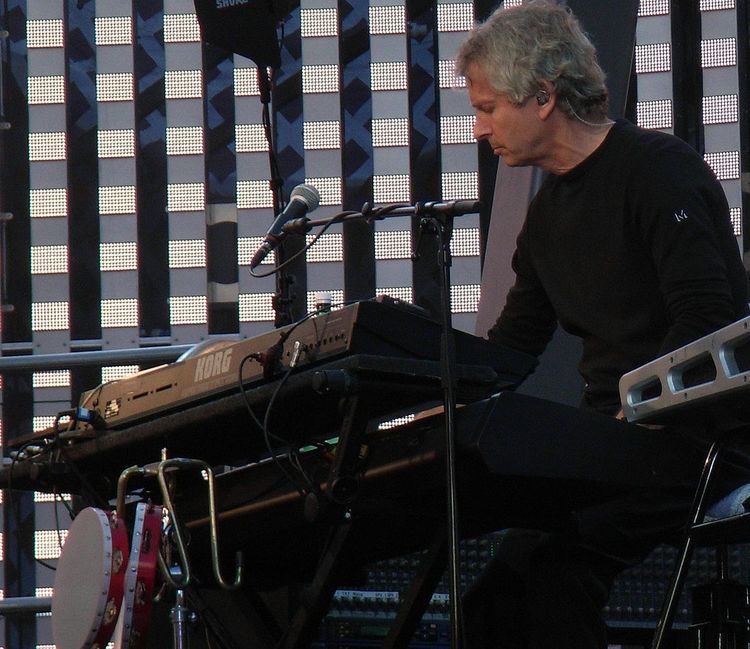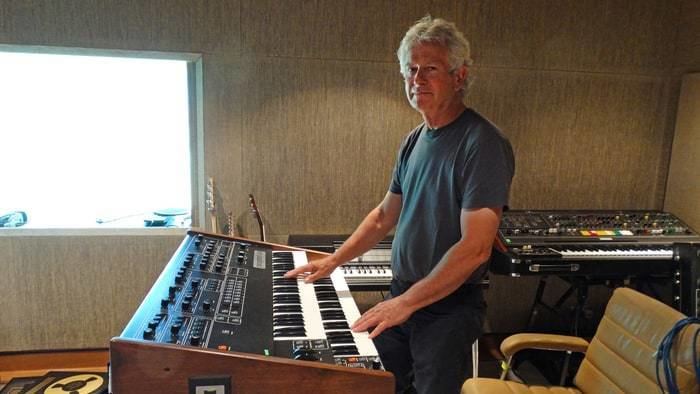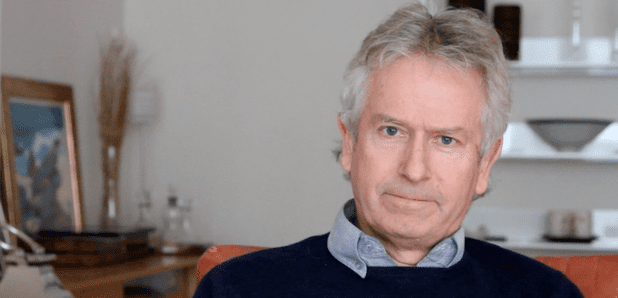Birth name Anthony George Banks Spouse Margaret Mcbain (m. 1972) Role Musician | Name Tony Banks Years active 1967–present | |
 | ||
Occupation(s) Musiciancomposermulti-instrumentalist Instruments Keyboardsvocalsguitar Labels CharismaPolydorVirginAtlanticGiant/RepriseNaxos Children Emily Banks, Benjamin Banks Albums Similar People Profiles | ||
Anthony George "Tony" Banks (born 27 March 1950) is an English musician, songwriter, composer and multi-instrumentalist, primarily known for being the keyboardist and a founder member of the rock band Genesis. He is one of the only two members (the other being bassist/guitarist Mike Rutherford) who have been with Genesis throughout the band's entire history. In 2010, Banks was inducted (as a member of Genesis) into the Rock and Roll Hall of Fame. In 2015, he was named "Prog God" at the annual Progressive Music Awards. Banks is ranked No. 11 on MusicRadar's greatest keyboard players of all time.
Contents
- Early years
- Career in Genesis
- Equipment
- Sound innovations
- Film scoring
- Rock albums
- Classical albums
- Instruments
- Personal life
- References

Banks was one of the main composers of Genesis's music and made major lyrical contributions to the band's songs. As the band's keyboardist he used a variety of instruments, including the ARP Pro Soloist synthesiser, the Mellotron, the Yamaha CP-70, and the Hammond T-102 organ. In the band's earliest years Banks would play acoustic guitar for some of the mellow and pastoral songs.

Outside Genesis, Banks has pursued a solo career, which has included film scoring, pop songs and orchestral music. In 2006, the first Tony Banks biography, Man of Spells by journalist Mario Giammetti, was published in Italy (Edizioni Segno).

Early years

Anthony George Banks was born on 27 March 1950, in East Hoathly with Halland, East Sussex, England. He received classical training in piano and taught himself to play guitar. He attended Charterhouse School, where he met fellow pupil Peter Gabriel in 1963. Banks originally planned to study mathematics in higher education. After Charterhouse he began studying chemistry at Sussex University but soon switched to physics and philosophy. After a year at Sussex, he took a leave of absence to explore a full-time career with Genesis and never returned.

Banks and Gabriel, together with drummer Chris Stewart, formed a band called Garden Wall. This band merged with another called Anon, which included Mike Rutherford and Anthony Phillips. They recorded a set of demos which ultimately led to the formation of the band that became Genesis.
Career in Genesis

Banks's elaborate arrangements and keyboard solos – such as the piano introduction to "Firth of Fifth" and the instrumental sections of "The Cinema Show", "Watcher of the Skies", and "Supper's Ready"— helped to establish Genesis's sound. In addition to playing keyboards, Banks contributed (along with Anthony Phillips, Steve Hackett and Rutherford) to Genesis's 12-string acoustic passages in songs such as "The Musical Box", "Entangled", "The Cinema Show", and the beginning part of "Supper's Ready". Banks also was an occasional back-up vocalist and sang co-lead vocals on "Shepherd", an unreleased track from 1970 which finally surfaced on the Genesis Archive 1967–75 boxed set. Notable Banks-penned Genesis songs (post Peter Gabriel) include "Mad Man Moon", "One for the Vine" and the anthemic ballad "Afterglow", which remained a popular coda to the Banks-driven medleys that the group played during live shows for years.
Equipment

Banks achieved a distinctive sound by running all of his keyboards (as well as his 12-string guitar) into a mixing board and then running the signal output of the board into a Leslie speaker (both the mixer and the rotary speaker were homemade). This can clearly be heard on everything Banks plays on the Genesis Live album.
Banks's earliest setup included a Hammond L-100 organ, a Hohner Pianet N and a Mellotron MkII, all of which (as well as grand piano) are first heard on the Trespass album. Banks used the Pianet as both a substitute for a grand piano, and also as a lead instrument, with the use of a fuzz box (also homemade, similar to the Fender Blender). He would often duel with Hackett's guitar, as heard on tracks like "The Musical Box", "The Return of the Giant Hogweed", or "Supper's Ready". Banks in 1974 switched from his Pianet to an RMI 368x Electra Piano and Harpsichord, which was soon integrated into the sound of Genesis, as first heard at various points on The Lamb Lies Down on Broadway (1974) album. It was often effected with the homemade fuzz box and an MXR Phase 100 – later these pedals were inserted in the panel of the Electra Piano. In 1978, the RMI was replaced with the Yamaha CP-70 electric grand piano.
The first synthesizer used by Banks was the monophonic ARP Pro Soloist, which Banks first acquired in 1973 along with a Hammond T-102 and a Mellotron M400 for the Selling England by the Pound album instead of the Hammond L122 and the Mellotron MkII. With the release of the Trick of the Tail album in 1976 and onward, Banks made use of the ARP 2600, a semi-modular synthesizer, in the studio as well as live on stage. On 1978's ...And Then There Were Three... the Polymoog (one of the very first polyphonic synthesizers) was integrated into Banks' expansive array, which enabled more expressive and highly layered "colorful" textures along with his unique use of MXR Phase 100 and Boss CE-1 Chorus effects pedals on the Hammond T-102 organ. During this time, he also added a Roland RS-202 string and brass synthesizer to mainly replace the Mellotron, though not used live. He also briefly used a Fender Rhodes electric piano. He also acquired a Yamaha CP-70 electric grand piano, which, when put through a Boss chorus, would become a signature part of Banks' 1970's - 80's sound.
He used this technique all the way up to Duke in 1980, when he made a major overhaul of his rig, dropping the ARP 2600, the ARP Pro-Soloist, the Mellotron and the RS-202 in favour of a Yamaha CS-80, a Sequential Circuits Prophet-5, an ARP Quadra and a Roland VP-330 Vocoder Plus. On Abacab in 1981, the organ was no longer featured; organ sounds were emulated using a Sequential Circuits Prophet 10 synthesiser through the Boss CE-1. He also added a NED Synclavier II, which also has had prominent features in Banks' career, such as on "Home by the Sea". For album Genesis in 1983, he replaced the Polymoog by an E-mu Emulator digital sampler. His final changes in this rig were replacing the E-mu Emulator for an E-mu Emulator II+ and the Roland VP-330 Vocoder Plus by a Yamaha DX7 for "Invisible Touch". Since the We Can't Dance (1991) album, Banks has favoured Roland and Korg synthesizers, such as Roland JD-800 and Korg Wavestation.
Evolving technology and sampling has allowed him to use a smaller rig of 4 or 3 keyboards with an array of rack mounted synth modules to emulate many of the earlier sounds. His concert rigs since When in Rome 2007 include Korg Wavestation and Roland A-90 keyboard acting as MIDI controllers for rack mounted Korg Wavestation SR, Roland JD-990, Yamaha TX7, E-mu Proteus I and II, and E-mu EIV, as well as Korg OASYS as a master keyboard.
Banks has never been shown to hold any nostalgia for his older gear, and has always favoured new technology where practical. While the piano has featured throughout his career, both with Genesis and solo, he claims to only have started playing the organ "because it was the only alternative to the piano – it wasn't because I loved the organ!" He only used the ARP Pro Soloist because it was the only synthesizer available to him at the time, and prefers string samples to the Mellotron, calling them "vastly better".
Sound innovations
Banks pioneered many unique keyboard and synthesiser sounds throughout his career; music historian Wayne Studer has referred to him as "the most tasteful keyboardist of prog rock." One of his achievements was the technique of using the trigger output of a Linn LM-1 drum machine to have the hi-hat pattern trigger an ARP Quadra synthesiser, creating such parts as the pulsating drum sound in "Mama" (from 1983's Genesis) and "By You" on The Fugitive (1983). Another unique synth technique was used on the track "Who Dunnit?" from the 1981 album Abacab; a Sequential Circuits Prophet-5 was programmed with a few sounds, and the patches were switched manually (via the panel preset tabs) while he played.
Film scoring
Banks has written the following film scores:
Banks was also a contender to compose the music for The Terminator and was sent the script.
Rock albums
After the departure of Gabriel and Hackett from Genesis, Banks was the first of the three remaining members of the group to release a solo album. But unlike Phil Collins and Gabriel, who saw great solo success, and Mike Rutherford, who had a hugely successful side career with Mike + the Mechanics, Banks's solo efforts achieved only modest sales.
Apart from the album The Fugitive (1983) and selected other songs, Banks has employed guest vocalists on his solo albums; these have included (amongst others) Fish, Nik Kershaw, Toyah Willcox, Jack Hues and Jim Diamond.
Classical albums
Classical music was one of Banks's earliest musical influences. He learned to play piano pieces by composers such as Sergei Rachmaninoff and Maurice Ravel and recalls hearing The Planets by Gustav Holst when he was very young. He later became interested in the music of Gustav Mahler after hearing it in the movie Death in Venice. He also cites Dmitri Shostakovich and Erik Satie as composers whose music he has enjoyed. He identifies Symphony No. 4 in A minor and Symphony No. 7 in C major by Jean Sibelius and Ralph Vaughan Williams' Symphony No. 5 in D major as favourite pieces. Critics have noted that Vaughan Williams and film composer John Barry are notable influences on his own orchestral compositions. Banks has acknowledged similarities in style between his orchestral works and those of Vaughan Williams, Sibelius and Barry.
In 2004, Banks released a classical CD entitled Seven: A Suite for Orchestra. Banks's compositions are performed by the London Philharmonic Orchestra, conducted by Mike Dixon, and Banks himself played piano with the orchestra on three tracks. The album received a worldwide release on Naxos Records.
On 26 March 2012, Banks's second classical album was released, entitled Six Pieces for Orchestra, performed by the City of Prague Philharmonic Orchestra conducted by Paul Englishby: "Siren" featuring Martin Robertson on alto saxophone, "Still Waters", "Blade" with Charlie Siem on violin, "Wild Pilgrimage", "The Oracle" and "City of Gold".
Instruments
While Banks's rig varied from year to year, many pieces of equipment made repeat appearances. In addition, the rig sometimes changed between an album and the subsequent tour. Below are lists of the various rigs that Banks used live and on each album.
Live Rigs
Studio Rigs
Personal life
Banks currently lives with his wife Margaret, south of London. The couple were married on 29 July 1972, and have two children Ben (b. 1978) and Emily (b. 1981).
